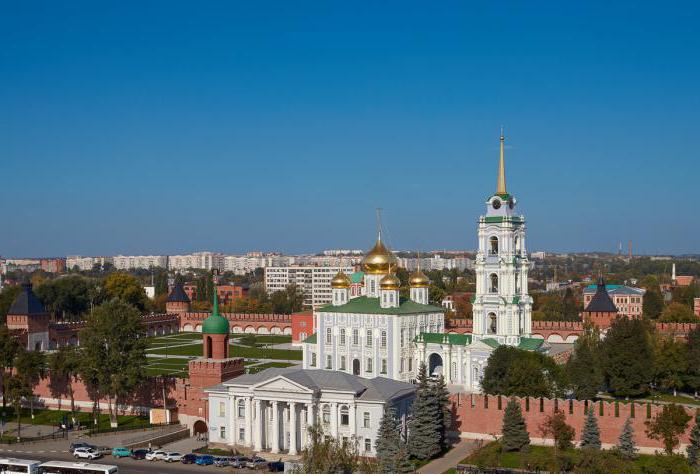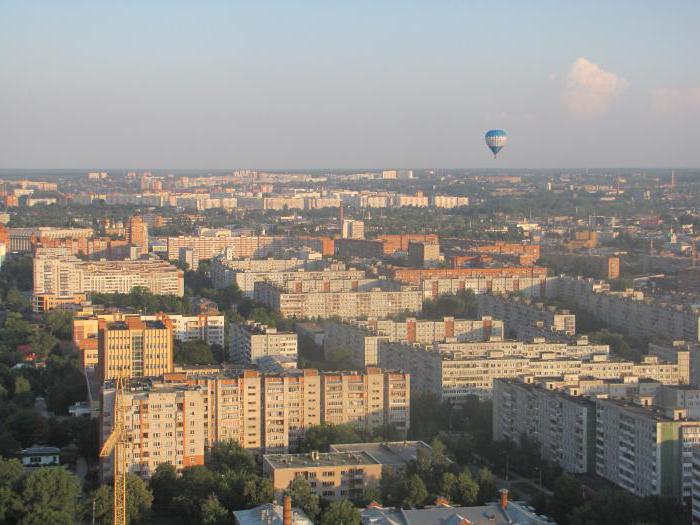Tula is an old Russian city located 180 kilometers from Moscow. Today it is a large industrial, economic and cultural center. What is its history, how has it changed over the centuries of Tula? The population, modern administrative division and interesting historical facts about the glorious city - especially for you in our article.
Legends of antiquity and real historical facts

The first mention of the city dates back to 1146. According to archaeological finds, a settlement in this area appeared much earlier. In the XII-XIII centuries, Tula was a border defensive point. Due to the constant raids of the neighbors, it became necessary to build a defensive structure. Originally it was a wooden fortress, but already at the beginning of the 16th century, a solid stone Kremlin was being erected on Tula land. What is noteworthy, the defensive structure has survived to this day. And today the Tula Kremlin is one of the most popular museums in the city and a remarkable architectural monument, which the city of Tula can rightfully be proud of. The population gradually increased, due to which the settlement developed. Since the middle of the XVII century, the city has become a major commercial and industrial center. Arms, metallurgy, and production are gradually developing. According to the census for 1811, about 52,000 people lived in Tula.
Modern history

Until the beginning of the 20th century, Tula was a city known primarily as a center of industry and trade. In peacetime, there has been a slight decline in the production of weapons, many local masters are being re-trained in the production of samovars and harmonies. Gradually, yesterday's workshops turned into factories. The city is famous for the production of gingerbread. In Tula, several families were engaged in this business at once, each of which could boast its own recipes. The city played a significant role in the history of the country during the Second World War. The population of the city of Tula showed courage and heroism, due to which the settlement withstood the siege by enemy troops, which lasted for 45 days. The descendants remember this feat today, every year Victory Day is celebrated in the Tula region with a special scope and triumph. The city of Tula was also awarded the highest award - the title of Hero City, the Gold Star medal and the Order of Lenin.
Tula today
Today Tula is a regional center, a fairly large and rapidly developing city. Traditions are respected here and the latest innovations in all spheres of life are successfully introduced. On the central streets, historical monuments of architecture peacefully coexist with modern business centers, just like this, modern Tula. The population for 2015 was 487,841 people. This figure shows a slight demographic decline compared to the second half of the XX century. Today, the local government is interested in improving the quality of life of citizens. Active construction and improvement of the housing stock and public areas is underway in the city, new cultural, sports and educational facilities appear.
The population and areas of Tula
Today, Tula is divided into five territorial districts, their names: Central, Proletarian, Railway Station, Zarechensky and Soviet. Local residents often divide their city into historical residential neighborhoods. For example, the Proletarian Territorial District includes such zones as: the Kirov Microdistrict, Krivoluchye and Glushanka. These unofficial names are regularly used by the Tula to accurately indicate the area. It is often difficult for visitors to understand how many regions Tula consists of. The population of the city today is 487,841 people (according to the 2015 census). The most densely populated area of the city is considered Proletarsky, today about 164 thousand people live in it. About half of the adult residents of the city are employed in the industrial sector. Significant impact on the economy of the region has a small business. In this sector, over 50 thousand people work today, taking into account the registered individual entrepreneurs. The administration of Tula also takes care of training. Today, many educational institutions are successfully operating in the region, among which there are several universities that are famous throughout the country.
Tula Attractions
It makes sense for tourists to get acquainted with the city by taking a walk in the historic center. The main architectural monument of Tula is the Tula Kremlin. These are not only perfectly preserved defensive walls with towers, but also ancient buildings on the territory. Nearby is also a museum of samovars and the local White House - a building that is occupied by the administration of Tula. The walk will not be boring, as within walking distance from the Kremlin there is a modern shopping center, where you can find a cafe for every taste, a cinema and recreation areas for the whole family. During a tourist trip, it also makes sense to visit the museum of gingerbread and weapons.
Interesting facts about the city
Today Tula is actively improving. Quite recently, a promenade for walks appeared in the city, new squares and recreation areas are arranged annually, and interesting street sculptures are installed. The Tula region is the birthplace of the famous Russian writer Lev Nikolayevich Tolstoy. Today, a tourist museum is open in his estate in Yasnaya Polyana, which operates year-round. The city boasts a rich cultural life. Festivals of various themes are regularly held in Tula and its environs. Today, the city is only developing as a tourist center, so the cost of living in hotels and excursions is acceptable. All areas of Tula can boast of developed infrastructure - you can choose a place to stay, focusing on your own taste and material capabilities. What is especially nice, you can get from one end of the city to another by private car in just 30-40 minutes, excluding traffic jams.